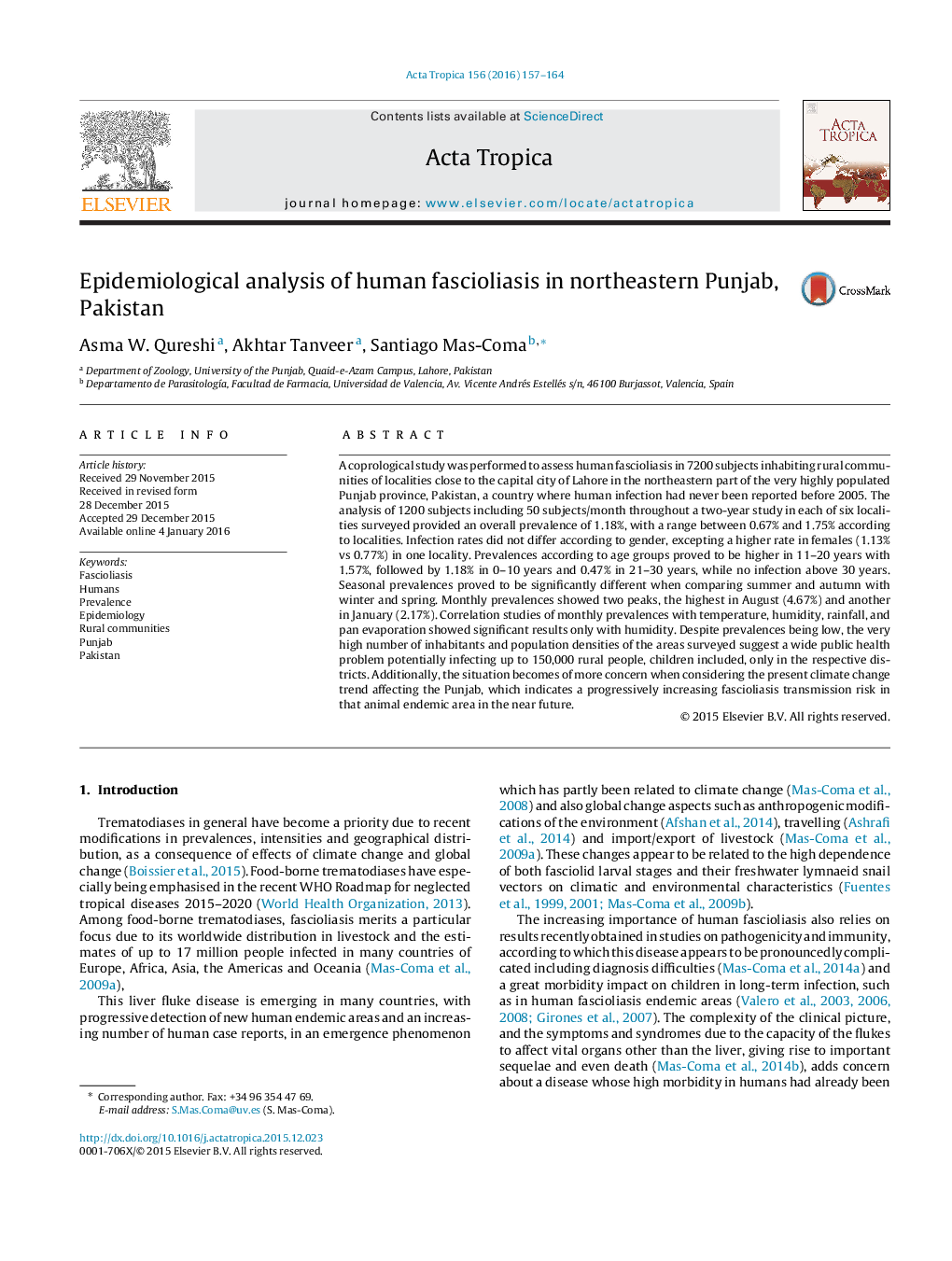| کد مقاله | کد نشریه | سال انتشار | مقاله انگلیسی | نسخه تمام متن |
|---|---|---|---|---|
| 3393758 | 1592768 | 2016 | 8 صفحه PDF | دانلود رایگان |
• A two-year fascioliasis coprological survey included 7200 subjects of six rural communities.
• Local prevalences ranged 0.67–1.75% (mean 1.18%), with a peak at 11–20-year age.
• Prevalences showed a peak in August (4.67%) and another in January (2.17%).
• Monthly prevalences showed significant correlation only with humidity.
• Despite prevalences being low, results suggest a wide public health problem.
A coprological study was performed to assess human fascioliasis in 7200 subjects inhabiting rural communities of localities close to the capital city of Lahore in the northeastern part of the very highly populated Punjab province, Pakistan, a country where human infection had never been reported before 2005. The analysis of 1200 subjects including 50 subjects/month throughout a two-year study in each of six localities surveyed provided an overall prevalence of 1.18%, with a range between 0.67% and 1.75% according to localities. Infection rates did not differ according to gender, excepting a higher rate in females (1.13% vs 0.77%) in one locality. Prevalences according to age groups proved to be higher in 11–20 years with 1.57%, followed by 1.18% in 0–10 years and 0.47% in 21–30 years, while no infection above 30 years. Seasonal prevalences proved to be significantly different when comparing summer and autumn with winter and spring. Monthly prevalences showed two peaks, the highest in August (4.67%) and another in January (2.17%). Correlation studies of monthly prevalences with temperature, humidity, rainfall, and pan evaporation showed significant results only with humidity. Despite prevalences being low, the very high number of inhabitants and population densities of the areas surveyed suggest a wide public health problem potentially infecting up to 150,000 rural people, children included, only in the respective districts. Additionally, the situation becomes of more concern when considering the present climate change trend affecting the Punjab, which indicates a progressively increasing fascioliasis transmission risk in that animal endemic area in the near future.
Figure optionsDownload as PowerPoint slide
Journal: Acta Tropica - Volume 156, April 2016, Pages 157–164
